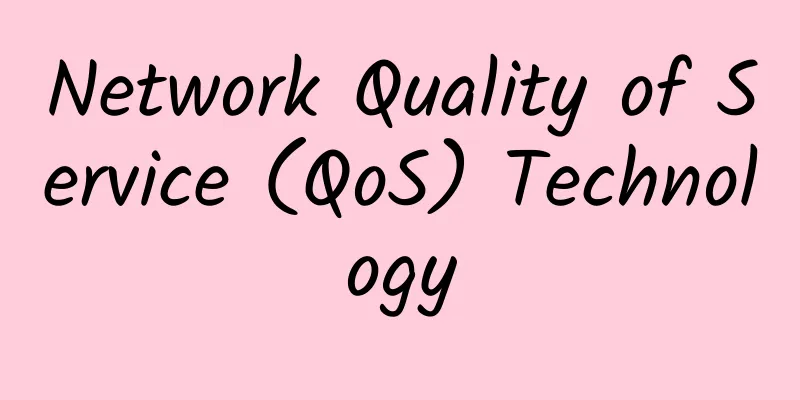As technology giants rush to enter the market, what kind of development will the satellite communications field usher in?

|
In recent years, the global satellite communications industry has entered a stage of rapid development. New technologies and applications related to satellite communications continue to emerge, becoming a hot topic in media reports and attracting widespread public attention. Especially in the past 2022, Huawei and Apple respectively released mobile phones equipped with satellite communication technology, which made the industry and the outside world boil. People speculated: Have we fully entered the era of satellite Internet? What kind of changes will the rise of satellite communications bring to our lives? In today's article, let Xiaozaojun give you a comprehensive interpretation. The development history of satellite communicationsOn October 4, 1957, the world's first artificial satellite, Sputnik 1, was successfully launched, marking the official start of the space age for mankind. Sputnik 1 has a strong Cold War background. During that special period, the superpowers launched artificial satellites mostly for military purposes. Later, as time went by, the civilian value of satellites was gradually discovered, and more and more commercial satellites were sent into space for purposes such as ground remote sensing, meteorological observation, and broadcast communications. Our country's first satellite is the famous "Dongfanghong 1". This satellite was launched on April 24, 1970. The music "Dongfanghong" it played in space is an indelible memory for countless Chinese people. After entering the 1980s, the development of international commercial satellites entered a new climax. Television signal transmission and communication message forwarding via satellite has become the mainstream trend. At that time, Motorola, a famous American company, proposed a great idea: to build a global satellite telephone network through a near-Earth constellation consisting of 77 satellites, allowing users to make calls anywhere in the world. That’s right, this concept is the famous Iridium Project. Iridium satellite (replica) The Iridium Project marked the first stage of human commercial satellite development. Limited by the technical conditions and business model at the time, the project eventually failed, leaving a mess behind. After entering the 20th century, another company made a comeback. This time, they proposed a more rational development goal, clearly positioning themselves as a supplement to the ground communication system (rather than wanting to replace base stations like the Iridium plan), and specifically providing network services for users in places such as the sea and remote areas. This shift in positioning marks the entry of commercial satellite development into the second stage. A representative enterprise in this stage is O3b Networks, which was founded in 2007. They have achieved success by cooperating with telecom operators to provide broadband satellite communication services for islands or ships. It is worth mentioning that in the second stage of development, the functional positioning of satellite communications has also changed. It no longer only serves voice calls and TV signal transmission, but faces a larger market, that is, satellite Internet. As you can recall, 3G and smartphones exploded around 2007. The booming development of mobile Internet has affected satellite communications and has gradually enabled satellites to serve the wide-area coverage and access of the Internet. In 2015, Elon Musk formally proposed the Starlink project based on his Space Exploration Technologies Corporation (SpaceX). The project plans to launch 4,425 low-orbit satellites (later increased to 42,000) to provide high-speed broadband Internet services to customers around the world. A Falcon 9 rocket carrying Starlink satellites is launching The launch of the Starlink project shocked the world and pushed satellite communications into the third stage, the era of low-orbit broadband satellite Internet. The so-called low-orbit satellite is a satellite operating in a low earth orbit 500-2000 kilometers above the ground. Although its coverage is not as good as that of high-orbit and medium-orbit satellites, it can make up for the coverage by increasing its number, providing greater capacity, lower latency, and higher network speed. In addition to low orbit, there is another important technological trend in the third stage, which is the rise of high-throughput satellite (HTS). High-throughput satellites use higher communication frequency bands (such as Ku-band and Ka-band), more advanced satellite platforms, more transponders, and stronger antenna technology, achieving stronger communication bandwidth capabilities than traditional satellites (low-throughput, within 1-2Gbps), and can provide users with a better network experience. In short, it is precisely because of the technological leap in low-orbit satellites and high-throughput satellites that the current rapid development of the global satellite communications industry has been laid. The application value of satellite communicationsThe reason why humans need to develop satellite communications is that it does have unique technological advantages. Satellites are in space, and as the saying goes: "Standing high, seeing far". They make use of limited space resources and can easily achieve wide-area signal coverage. As we all know, after hundreds of years of construction and development, humans have established relatively developed ground communication networks (optical fiber, microwave, mobile communication) on the earth, covering a large population. However, these networks are mainly concentrated in residential areas. When we say that network coverage is high, we are referring to population coverage, not land coverage. Take my country as an example. Our network is the most powerful in the world, and can achieve 99% population coverage. But the land coverage is only about 30%. In other words, in the vast surface of the earth, there are many deep mountains, forests, deserts, grasslands, Gobi and other areas where there are no mobile phone signals, let alone optical fiber. Therefore, we can use satellite communications to make up for the shortcomings of traditional ground communication systems and achieve coverage of these remote areas. Satellite communication, with extremely strong coverage capabilities Satellite communications can provide strong support for application scenarios such as resource exploration, forest fire prevention, disaster relief, adventure tourism, and wildlife protection, which can not only facilitate business development but also ensure life safety. For residents in economically underdeveloped areas, satellite communications provide fast and cheap Internet access, helping to boost the local economy and bridge the digital divide. In recent years, Internet of Things applications based on satellite communications (such as asset management, geological disaster monitoring, etc.) have also developed well and have huge market potential. In addition to land, satellite communications have two other important application areas, namely marine communications and airborne communications (aircraft communications). The demand for Internet connections in these areas is also very large, with a large number of high-value customers and extremely high returns on investment. Satellite communications industry prospectsIt is precisely because satellite communications have broad application scenarios and huge commercial value that it has attracted many companies to join in. In addition to the Starlink mentioned above, many foreign companies have launched commercial satellite Internet projects, such as Samsung's space Internet project, Amazon's Kuiper project, and Telesat's Telesat LEO project. In 2022, mainstream mobile phone manufacturers such as Huawei and Apple are accelerating their embrace of the satellite communications field, which means that the emerging track of "smartphone + satellite communications" has been paved. Subsequently, Qualcomm and Iridium targeted the mobile phone direct satellite connection market and applied satellite communications to Android phones. This technology will be available in the second half of this year and is expected to provide more functions than the iPhone. The industry generally believes that satellite communications may become a standard feature of flagship mobile phones from 2023 to 2024. in the country, we are also actively carrying out industrial and technological layout of satellite Internet. In 2016, China released the "Space White Paper", which clearly stated that it would improve the level of satellite systems and basic product capabilities, build three major systems of satellite remote sensing, satellite communication and broadcasting, and satellite navigation and positioning, build a space-ground integrated information network, basically complete the space infrastructure system, form continuous and stable business service capabilities, and promote the development of satellite and application industries. In addition, the white paper also proposed: "Encourage and guide private capital and social forces to participate in aerospace activities such as aerospace scientific research and production in an orderly manner, and vigorously develop commercial aerospace." On April 20, 2020, the National Development and Reform Commission for the first time included satellite Internet, 5G, industrial Internet, etc. in the information infrastructure, clarifying the major strategic significance of building satellite Internet. The satellite communication-related enterprises that are more familiar to everyone in China are state-owned enterprises such as StarNet Group and China Satcom. But in fact, private enterprises involved in commercial aerospace are also worthy of attention. Among them, one of the most representative companies is Zhejiang Spacetime Daoyu Technology Co., Ltd. (hereinafter referred to as "Spacetime Daoyu"). SpaceAero is a young company founded in 2018. It is building the world's first low-orbit future mobility constellation. Currently, there are 9 satellites in orbit, and the launch and deployment of the first phase of 72 satellites will be completed in 2025. In just a few years, they have achieved remarkable results in the fields of satellite manufacturing and satellite applications. In the field of satellite manufacturing, Spacetime Aerospace has achieved one-stop in-orbit delivery of AIT from satellite development to satellite mass production through its independently developed general-purpose satellite platforms of various scales, as well as low-cost, highly reliable satellites and supply chain products. In the field of satellite applications, they will be able to provide global medium and low-speed satellite communication services, satellite-based high-precision positioning services, and satellite remote sensing AI services through future travel constellations and their own ground systems, combined with the Beidou-3 system and the Tiantong-1 satellite mobile communication system. Today, Spacetime Aerospace has formed a research and development system with Shanghai Research Institute as the core and Nanjing and Xi'an R&D centers as the support. It has established two major business operation headquarters in Guangzhou and Qingdao, set up a Beijing business center, and has a satellite super factory (located in Taizhou, Zhejiang). This is the only private commercial aerospace unicorn company in China that has achieved a closed commercial loop. It has established a full-industry chain business system covering satellite research and development, manufacturing, measurement and control, and application, and is committed to becoming a global leading aerospace information and communication infrastructure and application solution provider. In June 2022, SpaceSpace successfully launched nine satellites into orbit with one rocket, opening a new chapter in China's commercial space industry. As a private commercial aerospace company, Spacetime Aerospace has built the world's first low-orbit future travel constellation, while making full use of the BeiDou-3 system and Tiantong-1 satellite mobile communication system to provide satellite application data services. They have integrated aerospace technology with new energy vehicles, and through their own constellation and ground system, they provide satellite-based high-precision positioning services for cars, enabling smart travel. In the field of consumer electronics, Geely officially entered the mobile phone field in 2021. As a subsidiary of Geely, it can be inferred that Spacetime Aerospace will undertake mobile phone satellite application services to help Geely build a future travel ecosystem that integrates car-machine and mobile phones. From this point of view, this company has broad business prospects. Final WordsThe journey of mankind is to the sea of stars. Wang Yang, CEO of Spacetime, believes that for private commercial aerospace companies to succeed, both technology and application scenarios are indispensable. The market-oriented mechanism has put forward higher requirements for private commercial aerospace, which not only needs to achieve technological innovation, but also needs to make aerospace technology serve human production and life and promote the economic development of human society. Over the past few decades, we have witnessed the vigorous development of satellite technology and the value it has created for the development of human society. Today, this technology has entered a new stage of evolution, its commercialization is accelerating, and its market potential is also constantly exploding. Under the wave of digital transformation, it is of great significance to seize the development opportunities of satellite technology and build a three-dimensional digital network integrating air and space. We are optimistic about the development prospects of aerospace technology companies, including Spacetime Aerospace. Their innovation and accumulation in the field of satellites have yielded initial results. In the future, they will surely bring us greater surprises. |
<<: How cloud services enable a 5G-driven future
>>: How Industrial Private 5G Can Help Enable Sustainable and Agile Industrial Operations
Recommend
RackNerd Mid-Autumn Festival Promotion, Los Angeles KVM Annual Payment Starting from $9.89
The Mid-Autumn Festival is still early, but the p...
Sign up for the 2019 Huawei Cloud Kunpeng Developer Competition now. Developers can collect prize money while playing games!
[51CTO.com original article] In the movie "L...
How to speed up banking business innovation through comprehensive real-time monitoring?
In recent years, with the gradual deepening of th...
4G is a knife, and 5G is a Swiss Army knife?
[[189173]] If the 4G network is a knife that can ...
Driving industrial transformation in the intelligent era, Huawei Intelligent Computing 2019 is ready to go!
[51CTO.com original article] The first time the r...
5G and 6G spectrum comparison
6G is not yet widely available, but the latest sp...
Is wireless mesh networking viable for the enterprise?
Wireless mesh networks have gained widespread att...
How should we carry out continuous delivery of software based on containers (I)
Overview In the past period of time, containers h...
[Black Friday] FlipperHost: 2GB memory KVM monthly payment starts at $4.9, 4 data centers in Los Angeles and other places
FlipperHost is a foreign hosting company founded ...
The sooner you know, the sooner you will benefit. What exactly is NaaS, which is about to become a trend?
X-as-a-Service offerings have been around for mor...
Learn more! The principles behind Wi-Fi revealed!
Wi-Fi and 4G/5G cellular networks are the two mos...
Accelerating 5G standardization requires coping with the complexity of test scenarios
The fifth generation of mobile communication tech...
"2021 Bots Automation Threat Report" in-depth analysis of the four characteristics and five scenarios of automation threats
As Bots automation tools become more platform-bas...
Colorful light illuminates the palace of knowledge, and the library of Hubei's top universities has achieved a digital leap
【A famous university in Hubei is a comprehensive ...









